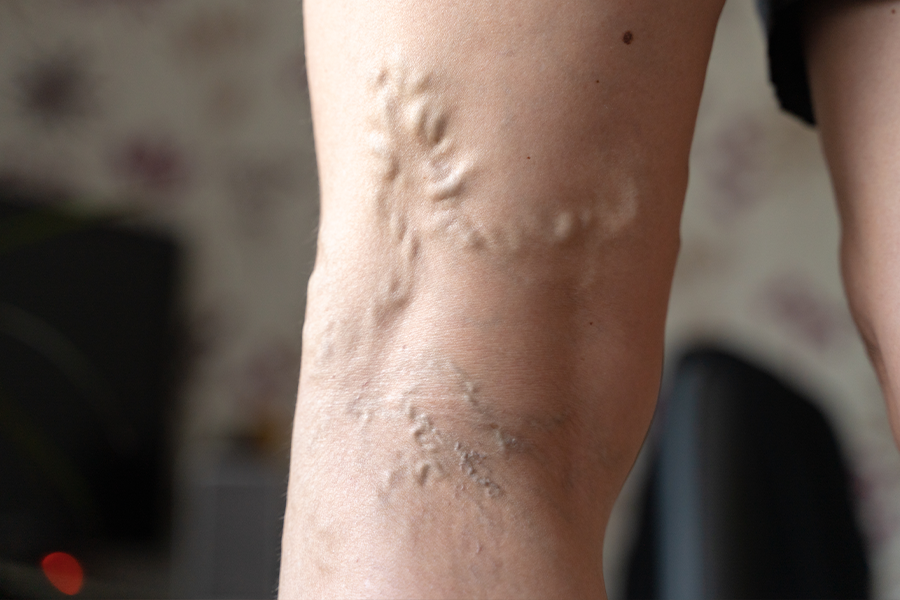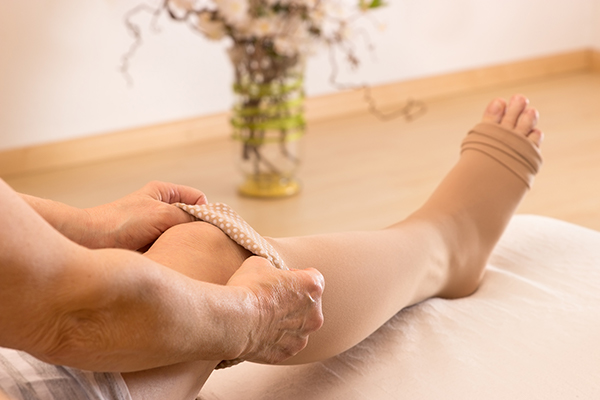- What are varicose veins?
- What causes varicose veins?
- Are varicose veins dangerous?
- How are varicose veins treated?
Your veins have a big job to do. As part of the circulatory system, these tiny tubular structures are responsible for bringing blood back to the heart in a continuous ebb and flow that keeps the body working properly. Sometimes, however, you can develop bulging veins on the legs which are referred to as varicose veins.
But should you worry if you’re one of the 40 million people with a varicose vein or two? Just how dangerous is this condition? Jon M. Wesley, M.D., F.A.C.S., board-certified vascular surgeon at Vascular Specialists of Central Florida has answers to the common physical problem known as varicose veins.
What Are Varicose Veins?
 Dr. Wesley says “Varicose veins, in short, are basically veins that have gotten too big and they typically get too big because the valves that keep them a certain size have become dysfunctional”. The dysfunction that Dr. Wesley is referring to is weakness of tiny valves within the veins themselves. This weakness causes blood to pool within the vein; which leads to the vessel becoming larger and more visible on the legs.
Dr. Wesley says “Varicose veins, in short, are basically veins that have gotten too big and they typically get too big because the valves that keep them a certain size have become dysfunctional”. The dysfunction that Dr. Wesley is referring to is weakness of tiny valves within the veins themselves. This weakness causes blood to pool within the vein; which leads to the vessel becoming larger and more visible on the legs.
Blood moves from your extremities back toward the heart via our network of veins in the body. Within each vein is a valve that keeps the blood flowing one direction toward the heart. The valve normally opens and closes to keep things moving along. When the valve or the walls of the veins themselves become damaged, blood can flow backwards or pool up. The veins will then enlarge, distort, and create the visual roadmap of twisting lines just under the skin that we know as varicose veins.
On the skin’s surface, you’ll see a twisting, sometimes humped, blue, red, or purple network of veins. Usually we don’t see this network, but with varicose veins, which often occur on the legs and feet, they are quite noticeable. These visibly swollen veins are often surrounded by spider veins, which are networks of capillaries.
Varicose veins can be painful or disfiguring but they are more frequently harmless beyond being unsightly. Varicose veins that are severely inflamed can actually be painful to touch, causing itchy skin and swelling.
What Causes Varicose Veins?
Technically speaking, varicose veins are caused by a malfunctioning or damaged vein structure. Why this exactly happens we’re not entirely sure. Dr. Wesley says, “There is typically a genetic predisposition to varicose veins”. Women more commonly develop varicose veins over men.
You may be more likely to develop varicose veins:
- If you are older
- If you stand or sit down for long periods
- If you are chronically inactive
- If you are obese or overweight
- If you are pregnant.
Are Varicose Veins Dangerous?
 Dr. Wesley can ease your concerns about varicose veins. He says, “They are rarely dangerous.” While you may experience some discomfort, for most people, the condition isn’t one we worry about too much.
Dr. Wesley can ease your concerns about varicose veins. He says, “They are rarely dangerous.” While you may experience some discomfort, for most people, the condition isn’t one we worry about too much.
You can help with varicose veins by practicing a few things at home. This includes:
- Avoiding long periods of standing or sitting
- Elevating your legs
- Losing weight
- Staying active to encourage circulation
- Wearing compression stockings
If you develop varicose veins during pregnancy, they will often go away after you have the baby. Other people will experience varicose veins that return even after they’ve had treatment.
There are a few complications that can stem from varicose veins. This can include open sores or bleeding. Varicose veins can also be a symptom of a condition known as chronic venous insufficiency, which affects the ability of your veins to send blood to your heart.
Dr. Wesley says, “Typically we treat varicose veins because either the patient has symptoms related to the varicose veins that don’t respond to conservative treatment, or they don’t like the way that the varicose veins look. It’s rare that we have to treat varicose veins because of some type of serious condition for which the patient’s health or limb is at risk”.
How Are Varicose Veins Treated?
 Dr. Wesley says, “Typically we manage varicose veins conservatively. We prescribe compression stockings and certain types of exercises. For patients who come back and feel as if their symptoms are resolved and they don’t mind the cosmetic effects of the varicose veins, that’s all they’ll ever need”.
Dr. Wesley says, “Typically we manage varicose veins conservatively. We prescribe compression stockings and certain types of exercises. For patients who come back and feel as if their symptoms are resolved and they don’t mind the cosmetic effects of the varicose veins, that’s all they’ll ever need”.
There is a second category of patient where, for whatever reason, the conservative approach doesn’t work for them. Dr. Wesley says they almost always see improvement in their symptoms, however, “Maybe wearing compression stockings is not comfortable enough, or maybe it doesn’t work with the type of occupation they have.” That’s when a different treatment method may be applied.
Dr. Wesley says in those patients, “Basically we’ll consider doing a type of procedure to get rid of the veins.” Some of the varicose vein treatments available today include:
- Endovenous ablation that closes the vein with lasers or radiofrequency energy
- Sclerotherapy that injects a chemical to make the varicose vein disappear
- Surgery to strip out and remove larger varicose veins
Dr. Wesley says, “All of the procedures we use to treat varicose veins are minimally invasive. Almost all of the procedures are done in the office.” They are, he says, “The types of procedures that you just walk away from, have someone drive you back home, and go back to your normal activities within either a matter of hours and certainly no more than a couple of days.”
If you have varicose veins and they’re painful, bleeding, or just unsightly, please don’t hesitate to give us a call to discuss your condition.
